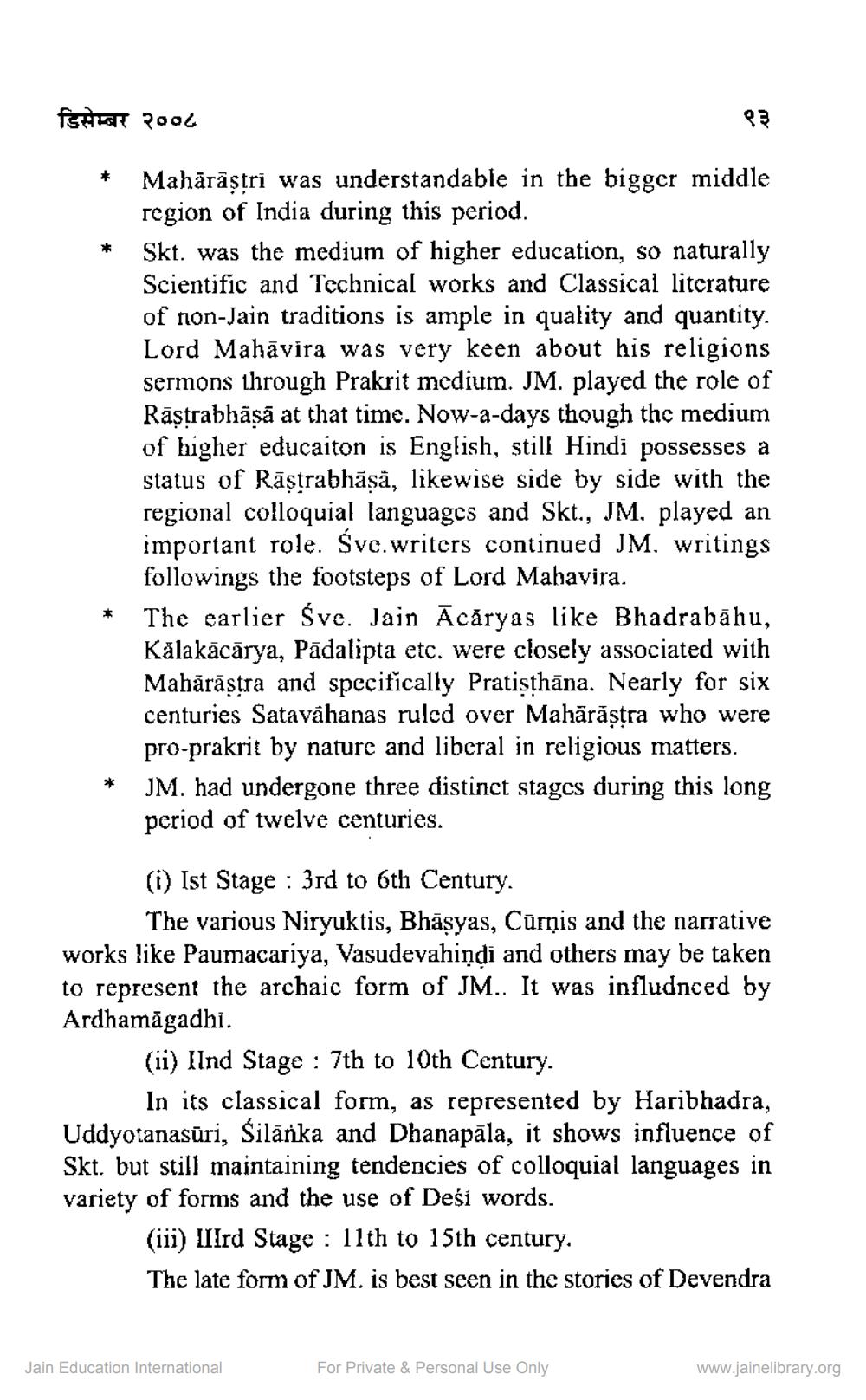Book Title: Perculiarities of Jain Maharastri Literature Author(s): Nalini Joshi Publisher: ZZ_Anusandhan View full book textPage 9
________________ डिसेम्बर २००८ ९३ * Mahārāştri was understandable in the bigger middle region of India during this period. * Skt. was the medium of higher education, so naturally Scientific and Technical works and Classical literature of non-Jain traditions is ample in quality and quantity. Lord Mahāvira was very keen about his religions sermons through Prakrit medium. JM. played the role of Rāstrabhāsā at that time. Now-a-days though the medium of higher educaiton is English, still Hindi possesses a status of Rāștrabhāsā, likewise side by side with the regional colloquial languages and Skt., JM, played an important role. Sve.writers continued JM, writings followings the footsteps of Lord Mahavira. The earlier Sve. Jain Acāryas like Bhadrabāhu, Kālakācārya, Pādalipta etc. were closely associated with Mahảrāstra and specifically Pratisthāna. Nearly for six centuries Satavahanas ruled over Mahārāștra who were pro-prakrit by nature and liberal in religious matters. * JM. had undergone three distinct stages during this long period of twelve centuries. (i) Ist Stage : 3rd to 6th Century. The various Niryuktis, Bhāsyas, Cūrņis and the narrative works like Paumacariya, Vasudevahindi and others may be taken to represent the archaic form of JM.. It was infludnced by Ardhamāgadhi. (ii) Ilnd Stage : 7th to 10th Century. In its classical form, as represented by Haribhadra, Uddyotanasūri, Šilānka and Dhanapāla, it shows influence of Skt. but still maintaining tendencies of colloquial languages in variety of forms and the use of Desi words. (iii) IIIrd Stage : 11th to 15th century. The late form of JM. is best seen in the stories of Devendra Jain Education International For Private & Personal Use Only www.jainelibrary.orgPage Navigation
1 ... 7 8 9 10
